How and where to drain the pool water?
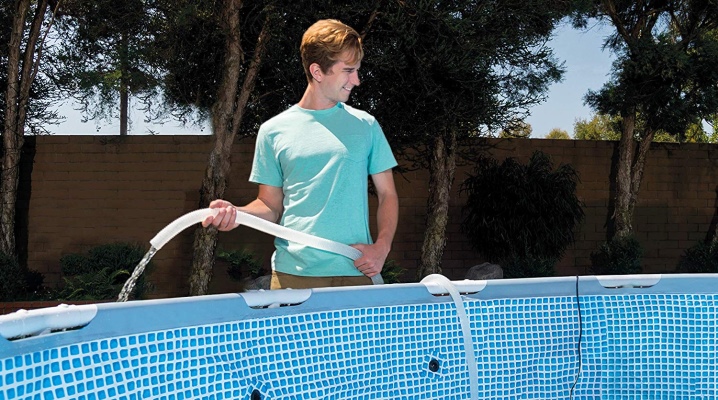
In the pool at the summer cottage or local area you can cool off in the heat and relax after a hard day. But buying or building an artificial reservoir is only half the battle. The second half is to arrange the drainage of the water from the tank. And it is better to think about this issue at the initial stage, that is, during the design and installation process. Of course, you can drain the liquid from the pool without organizing a drain, but this will be somewhat more difficult and inconvenient.
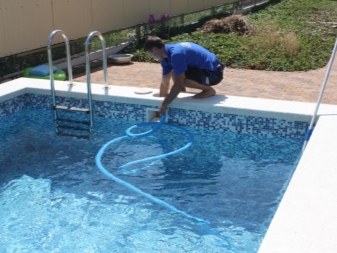
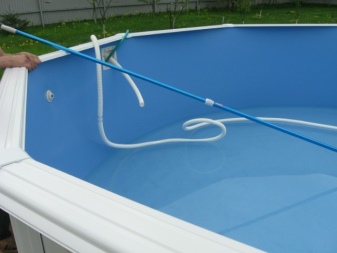
When is it needed?
First, you need to decide in what cases it becomes necessary to drain water from a home tank. There are at least 3 circumstances in which owners will have to pump water out of a reservoir.
- Pollution. The water can become cloudy or "bloom", foreign objects can get into the pool bowl, because of which the liquid becomes unsuitable for bathing: leaves, branches, corpses of animals or birds.
- Overflow of the pond bowl. This usually happens after heavy rains. In this case, it is better to change the water completely or at least partially.
- Repair of the reservoir or conservation for the periodwhen no one lives in the country or cold weather sets in.
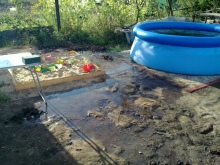
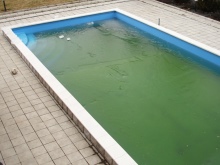
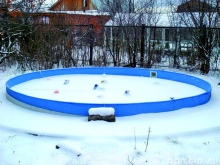
There are 2 diametrically opposite opinions about the release of the pool in the country from the liquid during the period when it is not in use. it pump out completely or leave partially.
Proponents of the first point of view believe that an empty pool will subsequently be easier to clear of trapped debris if there is no awning, and the frozen liquid will not put pressure on the walls of the hydraulic structure. Opponents argue that in the event that the pool is buried in the soil and the groundwater begins to freeze and press on the walls, the frozen water compensates for the pressure on the walls.
There is also a conciliatory option: to drain the liquid, but not all, leave about half. Then it will be easier to clean the bowl at the beginning of the season, and the remaining moisture during freezing will prevent the walls of the pool from collapsing.
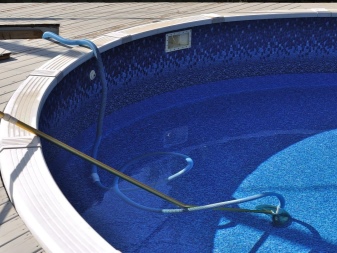
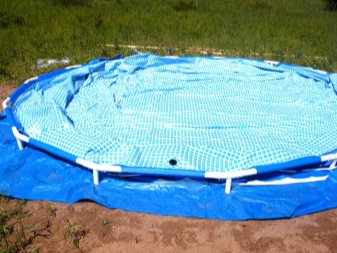
Where can you drain?
The pools have a fairly decent amount of water, at least a few cubic meters. When the time comes to drain it, the question immediately arises, where to put it all. There are several options.
- Use for watering. You can use the hose and pumping equipment and water the garden. But if the pool is large or contains cleaning chemicals, then the water from this pool can destroy all the vegetation on the backyard. It is better to use such a liquid for washing a car, a platform near a garage, paths near a house.

- Pump all water down the storm drain. If there is a storm drain near the site, then we can say that the owners are very lucky - they will not have to spend money on the construction of special receivers. Typically, rain ditches are designed to handle a decent amount of rainfall and can handle large amounts of water.
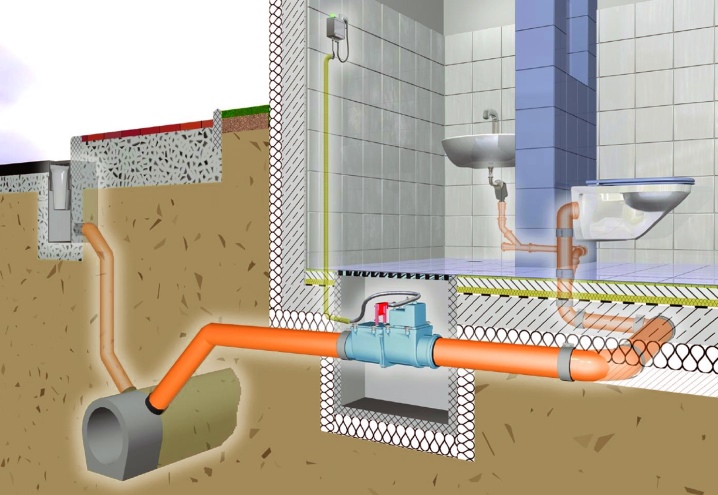
- Cesspool. This method can only be used by owners of tanks with a small volume of about two cubic meters. If you send more liquid there, then the pit will overflow, and everything will pour out of it. You may also need a plumbing machine to pump out and clean the pit, and this is a problem and additional costs.
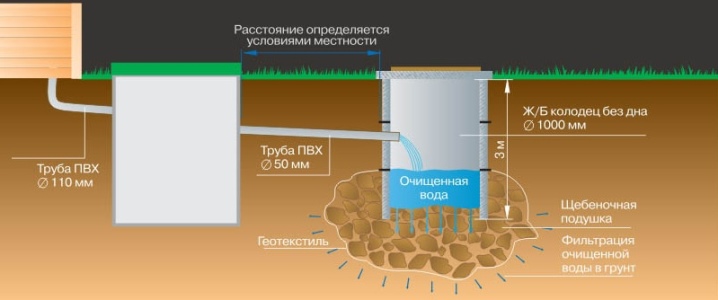
- Natural reservoir. This is the easiest and most convenient way. But it is advisable to drain water into the nearest ravine or lake if these objects are located within 25 m.In the event that they are further away, it becomes necessary to purchase a long hose and a powerful pump, which is quite expensive. In addition, water that has not been chlorinated can be discharged into natural reservoirs, because such volumes can kill all living things around.

- Sewerage. Draining into the sewer is the most correct method. But it needs to be foreseen at the design stage. To do this, the drain hole must be located at the lowest point of the pool. Dig pipes with a diameter of at least 11 cm, and preferably 15 cm, into the ground so that the water flows out by gravity quickly enough. To prevent the liquid from stagnating in the pipes, they must be laid in a trench at a slight incline and try to make as few turns as possible. You should also check your local drainage laws - there are restrictions in some areas. And in order not to have problems already in the process of work or drainage, it is better to find out everything in advance.
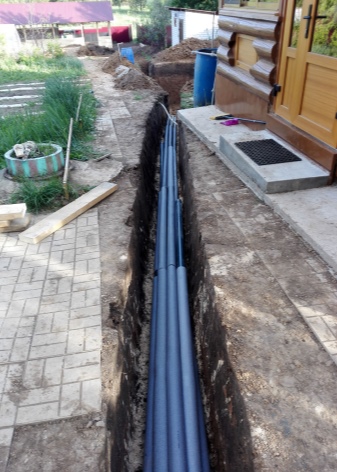
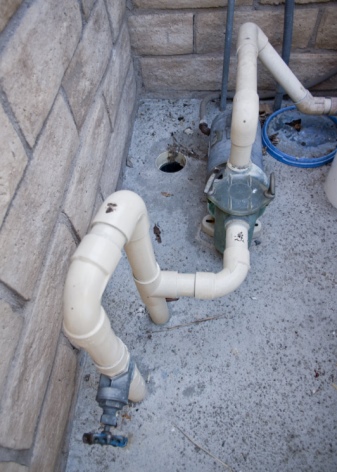
- Receiver. As they say - if the mountain does not meet us, then we will go to it. In the event that all of the above methods are not suitable for your option, you will have to make your own sewage system to drain the water. Usually, a hole with a volume of 2 or 3 cubic meters is pulled out, its walls are lined or poured with concrete. It is better to use natural stone or red refractory bricks for facing the sidewalls in the receiver - these materials will last a long time, since they are well resistant to aggressive environments. Small openings should be left in the walls so that water seeps into the ground faster.
There is a problem here: it will take a long time to pump out the water, since a large reservoir will have to be pumped out in several passes.

How to flush water from different types of pools?
There are several ways to drain the pool water.
- Manual. It can also be called barbaric. If the reservoir is small, then you can simply turn it over, and the liquid will quickly flow out onto the grass. In a frame tank, if it is not buried, one of the walls can be disassembled, and all the water will simply splash out of it. But we must take into account the possibility of flooding the neighbors.
- Hose. If the pool is not too large or dug in, you can drain the water with a hose. By connecting it to the drain valve, we direct the liquid to the drain.
- Pumping unit. In the event that the home reservoir is of a decent size or is not equipped with a drain valve, you will have to use pumping systems. They are submersible and outdoor. External pumps are permanently mounted, while submersible pumps have to be brought in. The list of actions is pretty simple:
- choose a place where the liquid will be pumped out;
- we connect the hose to the pumping system and direct it to the drain;
- if the pump is submersible, then we lower it to the bottom of the pool;
- the process must be closely monitored and not leave the running unit unattended;
- during pumping, you can lightly rinse the inner sides of the pool with a hose to wash off plaque or dirt;
- after the end of the drainage of water, some of it may remain at the bottom - you need to scoop up the remaining liquid from the bottom using a bucket or other suitable container.
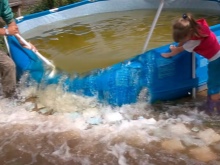
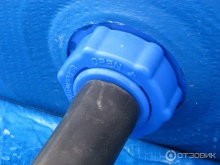

You need to approach the process of pumping water without haste, think over and do everything right so that there are no problems with neighbors and the vegetation does not suffer.
The methods for draining the pool water are given below.



































































The comment was sent successfully.